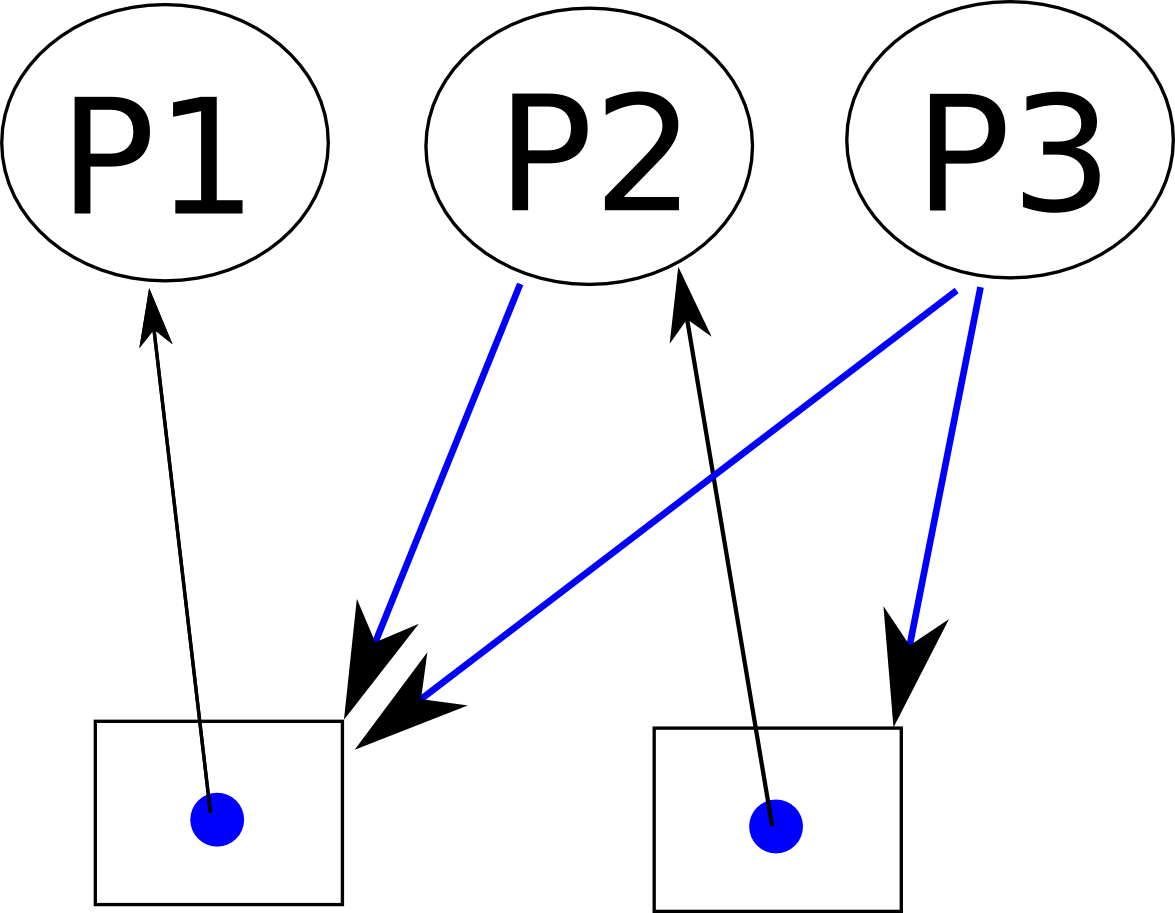-
Notifications
You must be signed in to change notification settings - Fork 771
Deadlock, Part 1: Resource Allocation Graph
A resource allocation graph tracks which resource is held by which process and which process is waiting for a resource of a particular type. It is very powerful and simple tool to illustrate how interacting processes can deadlock. If a process is using a resource, an arrow is drawn from the resource node to the process node. If a process is requesting a resource, an arrow is drawn from the process node to the resource node.
If there is a cycle in the Resource Allocation Graph and each resource in the cycle provides only one instance, then the processes will deadlock. For example, if process 1 holds resource A, process 2 holds resource B and process 1 is waiting for B and process 2 is waiting for A, then process 1 and process 2 will be deadlocked.
Here's another example, that shows Processes 1 and 2 acquiring resources 1 and 2 while process 3 is waiting to acquire both resources. In this example there is no deadlock because there is no circular dependency.

A lot of times, we don't know the specific order that a resource may be acquired so we can draw the graph directed.
As a possibility matrix. Then we can draw arrows and see if there is a directed version that would lead us to a deadlock.
Consider the following resource allocation graph (assume that the processes ask for exclusive access to the file). If you have a bunch of processes running and they request resources and the operating system ends up in this state, you deadlock! You may not see this because the operating system may *preempt some processes breaking the cycle but there is still a chance that your three lonely processes could deadlock. You can also make these kind of graphs with make and rule dependencies (with our parmake MP for example).
Legal and Licensing information: Unless otherwise specified, submitted content to the wiki must be original work (including text, java code, and media) and you provide this material under a Creative Commons License. If you are not the copyright holder, please give proper attribution and credit to existing content and ensure that you have license to include the materials.


